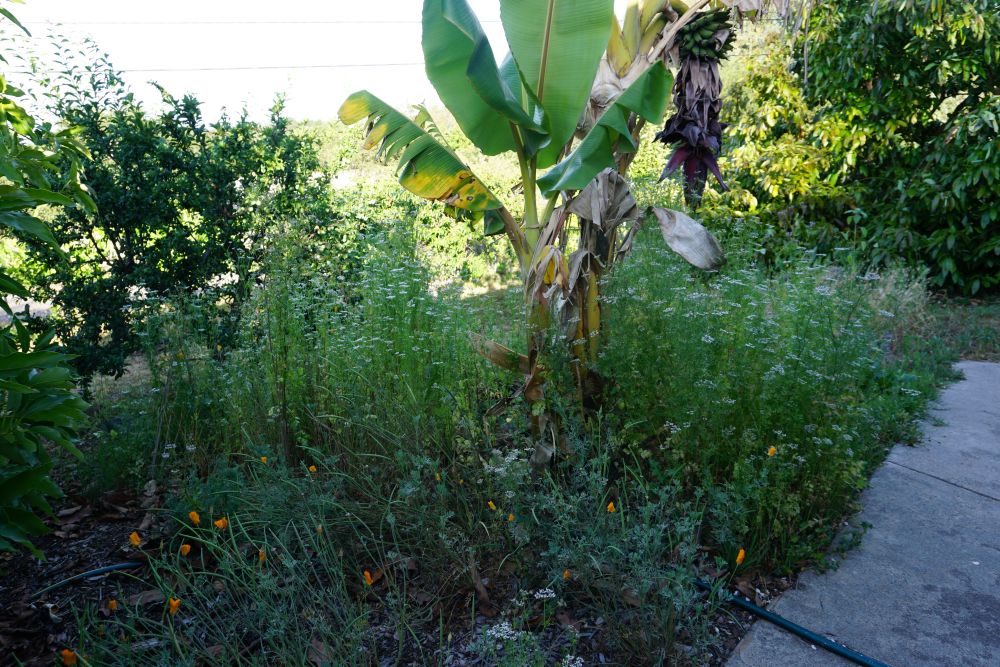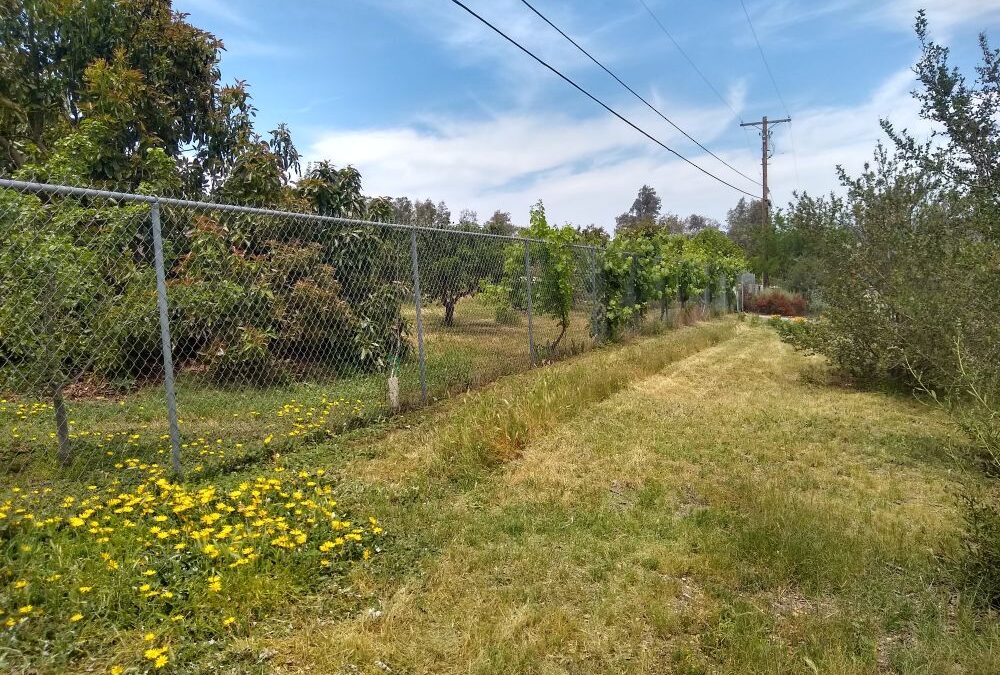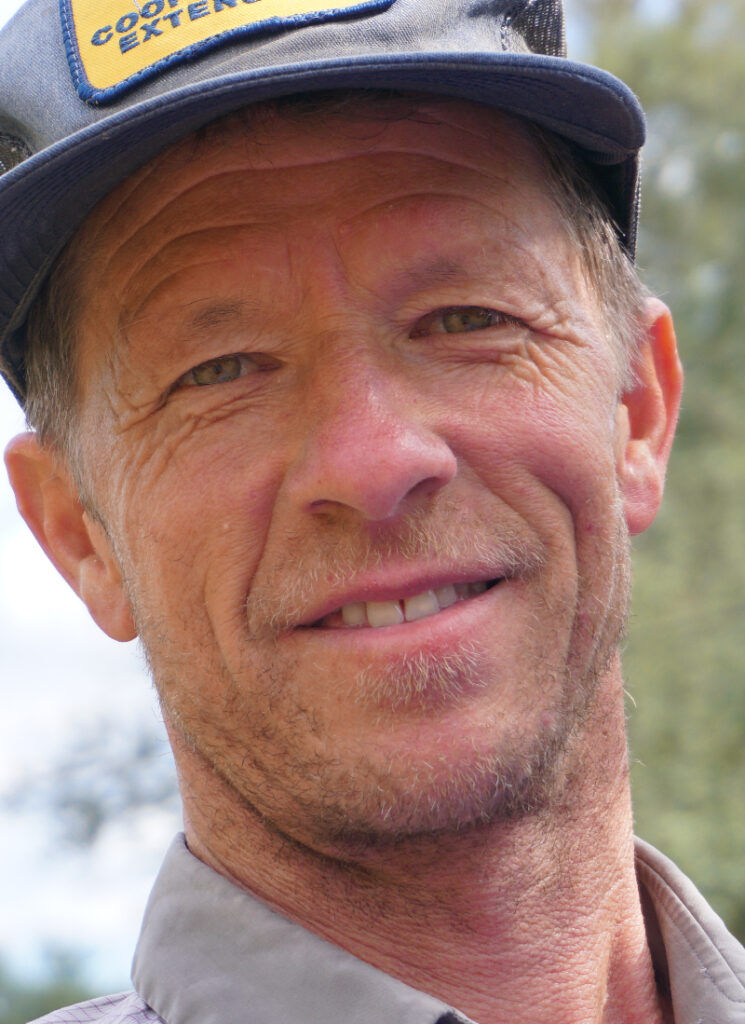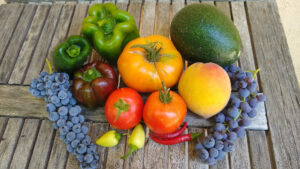Twelve summers ago, we moved to this property and there were tumbleweeds growing across the bottom half. No, I said. I don’t accept having to walk through prickly tumbleweeds.
I decided right then that I would figure out how to eliminate them.
Because tumbleweeds propagate themselves by seed, the first thing I did that first summer was drag around trash cans and fill them with entire tumbleweed plants, thereby removing the seeds, thereby removing potential future tumbleweeds. Over the course of the summer, I removed every part of every single tumbleweed plant I saw and sent it all to the landfill.
Of course I didn’t get them all. The following spring, I found young tumbleweeds popping up throughout; however, now my job was not to try to remove seed but rather to kill the young plants so they could never make seed. I did this with a shovel. Tumbleweeds have a single deep root that is easily severed by placing a shovel head on it and giving one sharp kick. I patrolled and shovel-kicked young tumbleweeds every week or two until I found no more that season.
The next year, our third at the new property, I remained vigilant in the spring and found a few young tumbleweeds to kill here and there. I have not seen a single tumbleweed plant on the property in the decade since.
This experience was empowering to me. I realized that I had some measure of control over weeds through using my brain in conjunction with my muscles. I hadn’t just weed whacked or sprayed an herbicide; I had identified the weed and learned how it reproduced, and then I created a tailored, timely, and efficient plan of attack. And to my surprise, it worked. Honestly, I was surprised that it actually worked!
Deselecting
I think of that tumbleweed program as deselection. I deselected tumbleweeds from the collection of plants that grew wild on my land.
I have continued to deselect some other weeds over the years. Stinging nettle I eliminate from any area except one high corner. We can’t walk barefoot or in sandals with stinging nettle around, but I like to keep some on the property so I can harvest it to eat during its season.
Selecting
More often these days, I curate the cast of weed characters in my yard through selection. Weeds that I like get spared the mower, for example. This means they get more sunlight and produce more seed in order to become more numerous the following year.

When mowing and weed whacking, I also usually don’t cut very low. Mowing or weed whacking at a low height, especially with frequency, will create a higher proportion of plants that have low growing-points. For example, I’ve noticed that frequent, low mowing creates a higher proportion of filaree and mallow but a lower proportion of most grasses.
Since I usually desire a diversity of weeds in an area, I don’t mow very often nor at a low height. In this way, I am selecting a broader community of weeds.
Weeds or wild plants?
The earth insists on covering itself with plants. Except for poisoned ground, no piece of dirt will remain bare for long.
With this in mind, rather than trying to keep the mulch under a banana plant clean of weeds, I chose some tough plants to give the space over to. I could allow these plants to proliferate and then crowd out undesirables.
A few years back, on top of the wood chips I placed poppy and cilantro seeds from plants elsewhere in my yard. As they grew each winter and spring, I spent a little time removing any weeds that also grew around the banana, but it didn’t take much because the poppies and cilantro are vigorous and numerous and crowded out the weeds, more and more each year.

Many native plants can be used in this same way. For example, I have used buckwheat to take over areas that would otherwise be annual grass weeds that I would have to mow.
Which plants to call weeds or native plants or wild plants or garden plants can even become unclear sometimes — when you think of yourself as a curator.
Some related posts
– (Schoustra talks about selecting certain annual weeds that grow on rainfall to use a cover crops between his orchard trees)
Before killing it, name that weed
Thank you for your support of my Yard Posts so I can keep them coming and keep them without ads.
All of my Yard Posts are categorized and listed here.




I have a lot of burr clover all over my St. Augustine lawn. I’ve tried everything to get rid of it. Last fall I put a weed-killer all over it that was guaranteed not to harm the St. Augustine. This spring, as the burr clover started showing up, I had my grandsons pull as much as they could out using a stand-up weed puller tool I had bought. Also, my gardner has been spot spraying the clover where he sees it. I think overall there is less burr clover than last year, but I sure would like to get more of it gone. Any ideas?
Hi Susan,
Burr clover, or burclover, showed up in one corner of my yard a few years ago, and I’ve also had a tough time keeping it from proliferating. I generally remove the plants with their seeds, but haven’t been serious enough about it to try to get them all for a couple years in a row. Thanks for reminding me. I think this year I will try to get them all and see if that was worth the effort next year.
What I know is that burr clover reproduces itself with seed. So I’ll focus on removing the seed.
But in your lawn, you might have best success resorting to a poison that kills the burr clover but not the St. Augustine. If that one you tried worked, then you might continue for another year or two.
Thank you Greg. What is the best time to spread the weed killer?
The most pernicious and persistent weed for me was Japanese honeysuckle, used for soil stability on slopes, for which it is perfectly suited. Roots more than a foot deep. I used a hose on jet to help me dig down, a messy job. Any root left would come back. Although I fought it, I had to admire it.